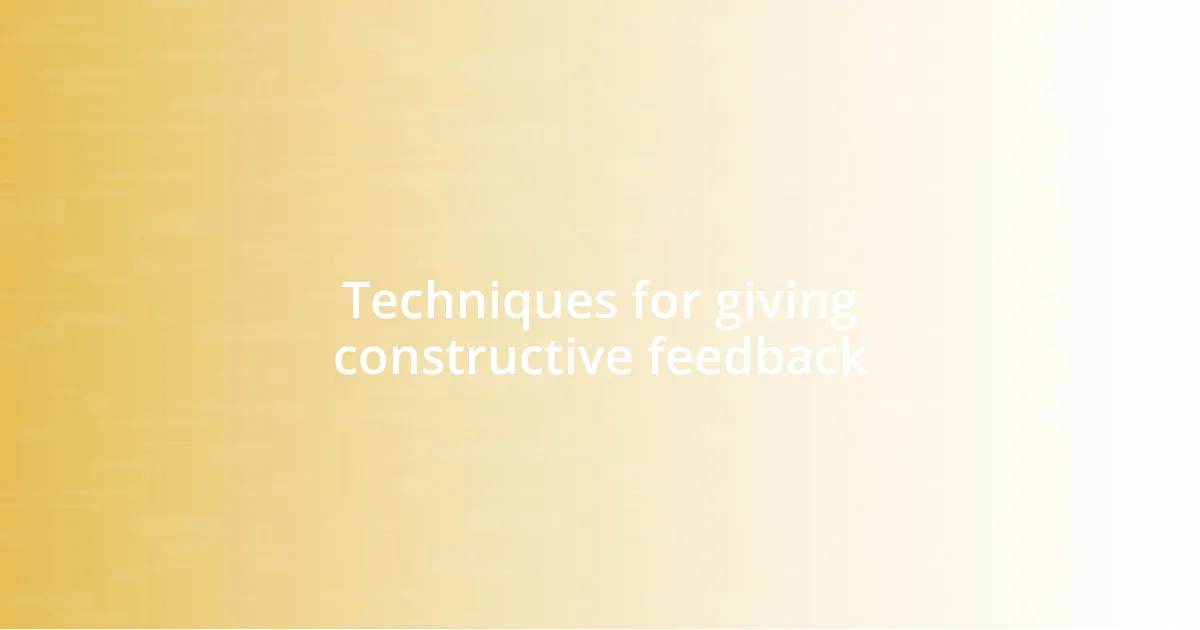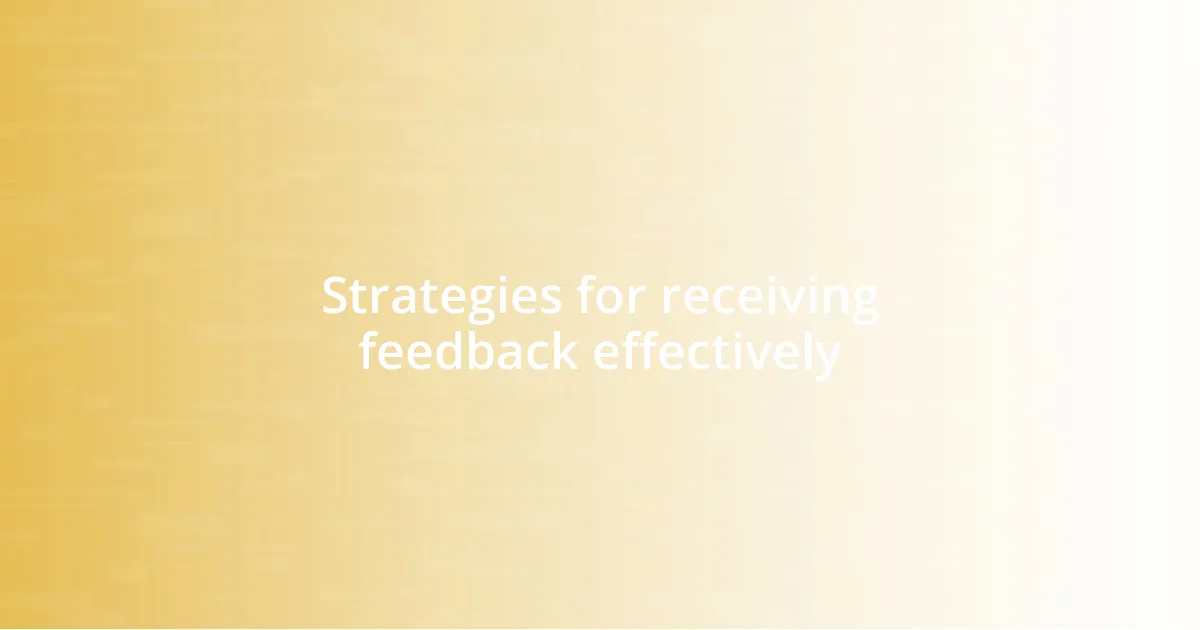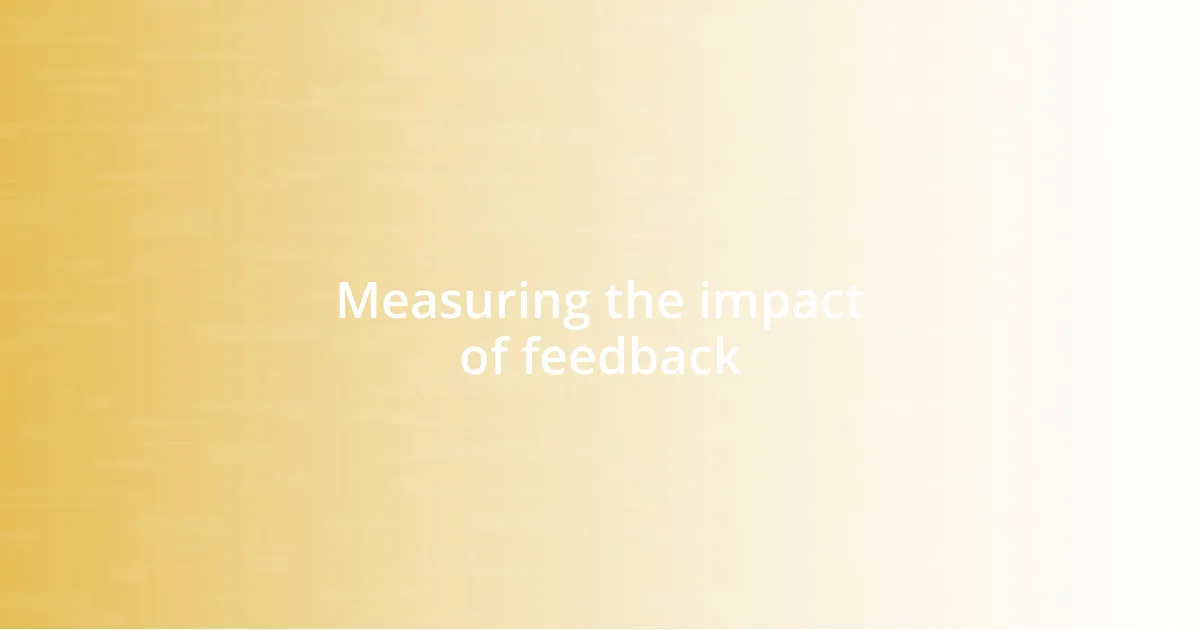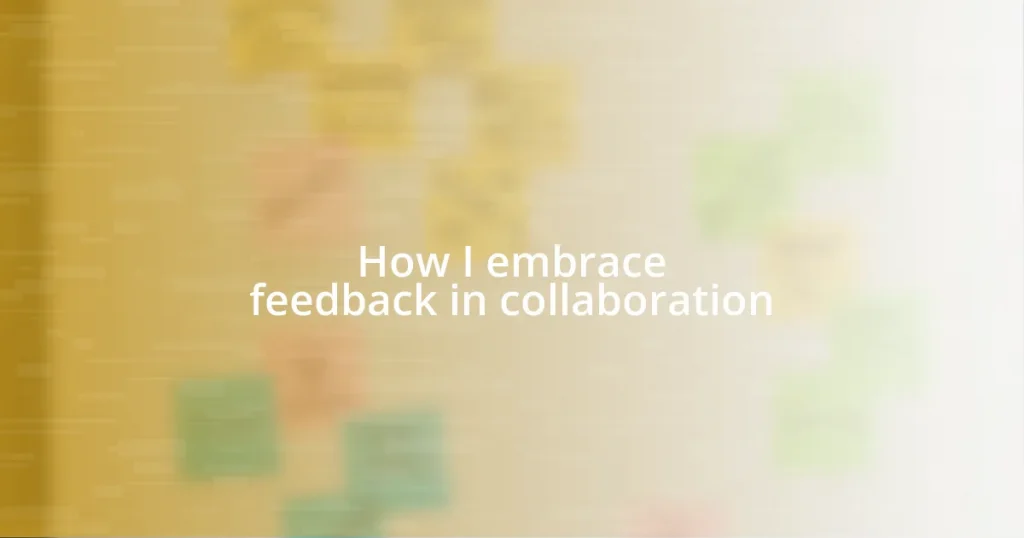Key takeaways:
- Feedback is essential for growth, transforming setbacks into opportunities for improvement and innovation.
- Building a feedback-friendly environment requires regular sessions, encouraging vulnerability, and celebrating achievements to foster collaboration.
- Effective techniques for giving feedback include being direct yet kind, using “I” statements, and encouraging dialogue for better understanding.
- Utilizing tools like digital comment threads and video conferencing enhances clarity and connection in feedback exchanges.

Understanding the importance of feedback
Feedback is the backbone of growth, isn’t it? I remember a time when I was working on a project that just didn’t resonate with my team. Their candid insights helped me see my blind spots, turning what felt like a setback into an opportunity for improvement. Without that feedback, I would’ve stayed stuck in my ways, missing out on valuable lessons.
Have you ever noticed how a single piece of constructive criticism can spark a change in your perspective? I once received a suggestion that challenged my approach to problem-solving. At first, I felt defensive, but upon reflection, I realized that this feedback opened up new avenues for creativity and collaboration. It transformed my thinking and ultimately led to a more innovative solution.
When embracing feedback, I’ve learned it’s crucial to approach it not as criticism, but as a chance for discovery. There was a moment when my mentor pointed out a recurring flaw in my communication style. Initially, I felt disheartened, but then I recognized how this insight could enhance my relationships with colleagues. This shift helped me to appreciate that feedback isn’t just about critiques; it’s about cultivating a richer, more collaborative environment.

Building a feedback-friendly environment
Creating a feedback-friendly environment involves fostering a culture of openness and trust. I recall a time when I initiated regular feedback sessions within my team. Initially met with hesitation, these gatherings turned into safe spaces where everyone felt valued. That shift allowed team members to share their thoughts freely, enhancing our collaboration and leading to innovative ideas.
Encouraging vulnerability is key in this process. I remember a colleague who shared a personal experience about receiving harsh feedback early in her career. Her honesty about how she learned and grew from those moments helped the team realize that feedback doesn’t have to sting; it can be a stepping stone towards success. This understanding transformed our interactions, making us more willing to give and receive input.
It’s also essential to celebrate achievements, no matter how small. I’ve seen firsthand how recognizing progress alongside constructive criticism fosters a supportive atmosphere. During team retrospectives, we not only discuss areas for improvement but also highlight successes. This balance reinforces the idea that feedback is a collaborative journey, not a one-sided confrontation.
| Strategies for Building a Feedback-Friendly Environment | Impact |
|---|---|
| Regular Feedback Sessions | Creates a routine where team members feel safe to share insights. |
| Encouraging Vulnerability | Builds trust and openness, leading to more honest feedback exchanges. |
| Celebrating Achievements | Balances criticism with recognition, fostering positive morale. |

Techniques for giving constructive feedback
Techniques for giving constructive feedback can make all the difference in how messages are received. When I present feedback, I always strive to be specific and focused. Instead of vague comments, I prefer to pinpoint exact behaviors or actions that need improvement. This clarity allows the recipient to understand my perspective without feeling lost or overwhelmed. I remember a team meeting where I addressed a colleague’s presentation style. By highlighting specific aspects that worked well, alongside areas for improvement, it not only helped her grow but also strengthened our bond.
Here are a few techniques that I find particularly effective:
- Be Direct Yet Kind: Frame your feedback in a way that’s honest, but considerate. The goal is to inform, not to hurt.
- Use “I” Statements: By sharing how the actions impacted me, it minimizes defensiveness. For instance, saying “I felt confused by the direction” rather than “You explained it poorly” encourages open dialogue.
- Encourage Dialogue: After delivering feedback, I often invite the other person to share their thoughts. This collaborative approach not only validates their feelings but can lead to deeper understanding.
During a feedback session in my previous job, my goal was to help a colleague improve his report writing. After sharing what I believed could enhance his clarity, I made space for him to express his viewpoint. It turned into a productive discussion, and we ended up co-creating a streamlined template that benefited the whole team. It was a reminder that great feedback is as much about listening as it is about speaking.

Strategies for receiving feedback effectively
Receiving feedback effectively isn’t just about absorbing what’s said; it’s about cultivating an open mindset. I remember an instance when I received feedback that initially felt like a punch to the gut, yet I later realized it was a golden opportunity for growth. How often do we dismiss constructive criticism because it doesn’t fit our narrative? Embracing feedback means seeing it as a tool, not a weapon.
Practicing active listening can also transform how feedback lands on your ears. I recall a situation where a colleague provided insights on my project management style. Instead of preparing my rebuttal, I focused intently on her perspective. Taking notes and nodding along helped me internalize her suggestions and showed her that I valued her opinion. This approach not only enriched my understanding but also deepened our rapport. Have you ever considered that the simple act of listening can open doors to improved relationships?
Lastly, seeking clarification when feedback is vague is crucial. I once faced a situation where feedback came wrapped in so much ambiguity that it left me second-guessing my efforts. Asking questions like, “Can you elaborate on that point?” can illuminate issues and demonstrate your commitment to improvement. This proactive stance not only aids in your development but also fosters a culture where feedback feels safer and more collaborative.

Embracing feedback for personal growth
Embracing feedback isn’t just a step in personal growth; it’s often a leap. I recall a time when a mentor pointed out that I tended to dominate conversations in meetings. At first, I bristled at the comment, feeling defensive. Yet, as I reflected, I recognized that being aware of this tendency could help me foster a more inclusive environment. It dawned on me: isn’t self-awareness a key ingredient for growth?
When I actively welcomed feedback, I was surprised by the flood of insights that followed. There was a project once where my team and I were struggling to meet deadlines. A peer suggested we try time-blocking techniques. Initially skeptical, I decided to implement it—and to my surprise, I felt a surge of productivity! I began to see how embracing feedback not only improved my workflow but also helped cultivate a sense of teamwork. Who would have thought that a simple suggestion could spark such a transformation?
It’s also essential to realize that embracing feedback involves a journey paved with discomfort. Reflecting on a critical review of my public speaking skills, I admitted to feeling vulnerable. Instead of collapsing under the weight of that critique, I chose to view it as an opportunity for refinement. I signed up for a workshop to work on my presentation skills, leading to newfound confidence. Have you ever considered that discomfort might just be the precursor to profound development? In my experience, the best growth often arises from the moments that challenge us.

Tools to facilitate collaborative feedback
In an age where collaboration is key, I’ve found that utilizing tools like digital comment threads can make a significant difference in facilitating feedback. For instance, during a recent project, my team used a shared document platform that allowed us to leave comments directly on each other’s work. This not only created a visible trail of dialogue but also helped us address specific points without the back-and-forth tangents that can sometimes cloud conversations. How much clearer and focused can our feedback be when we can pinpoint exactly what we’re discussing?
Another effective tool I’ve relied on is video conferencing software. There was a project where geographical distances made face-to-face meetings impossible. By scheduling virtual check-ins, we fostered a sense of connection and openness that emails simply couldn’t replicate. I recall a particular session where we gave each other real-time feedback, which led to dynamic discussions. It’s fascinating how seeing someone’s facial expressions can transform a simple critique into a shared learning experience, don’t you think?
Lastly, I can’t overlook the power of feedback apps. I once experimented with a platform designed specifically for teams to provide anonymous feedback. While it felt daunting at first, the insights I received were eye-opening. This tool not only encouraged honest communication but also revealed blind spots I hadn’t considered. The experience made me ponder—how can we cultivate a culture of continuous improvement without such tools to guide us? In my opinion, embracing these technologies can pave the way for richer, more impactful feedback interactions.

Measuring the impact of feedback
Measuring the impact of feedback is crucial in understanding how effective our collaborative efforts truly are. I recall a time when I implemented a feedback loop after a team presentation. By surveying my colleagues for their thoughts on my performance, I could pinpoint what resonated and what missed the mark. This process felt revealing—wasn’t it fascinating to see quantitative data alongside qualitative remarks?
Another experience that stands out was during a project debrief. We established a simple method of rating feedback on a scale from one to five. Not only did this bring clarity to our discussions, but it also fostered a sense of accountability among team members. Isn’t it enlightening how a straightforward rating system can amplify the way we perceive feedback’s influence on our progress?
Lastly, I believe in the power of reflection sessions. After receiving critical feedback on a recent project, I initiated a group discussion to evaluate our collective learning. In those moments, I felt the team’s dynamic shift; we transformed criticism into constructive conversations. How often do we take the time to measure the lessons learned, rather than just the results? In my journey, I’ve found that these reflective practices are invaluable for continuous improvement and growth within a collaborative space.















